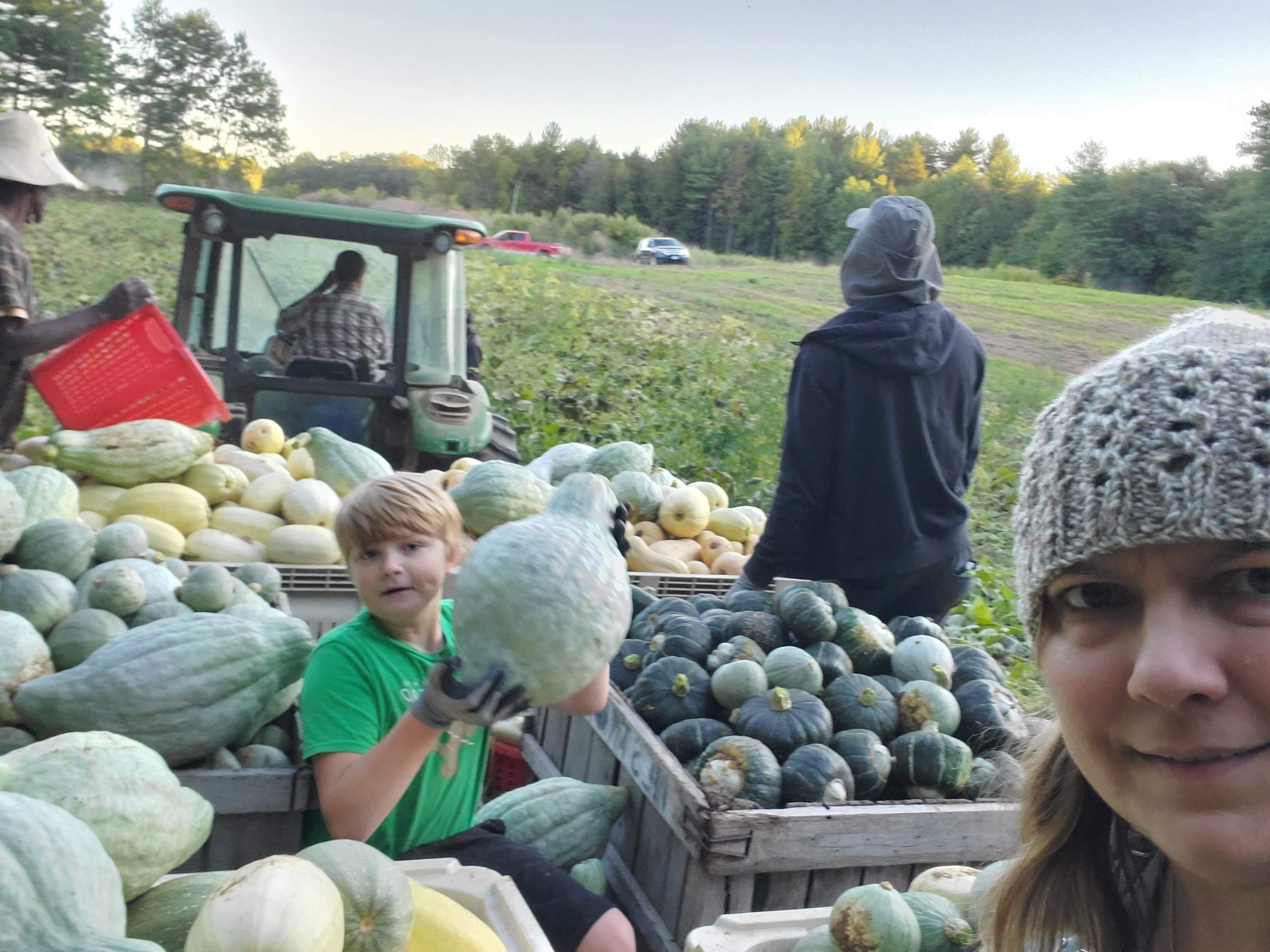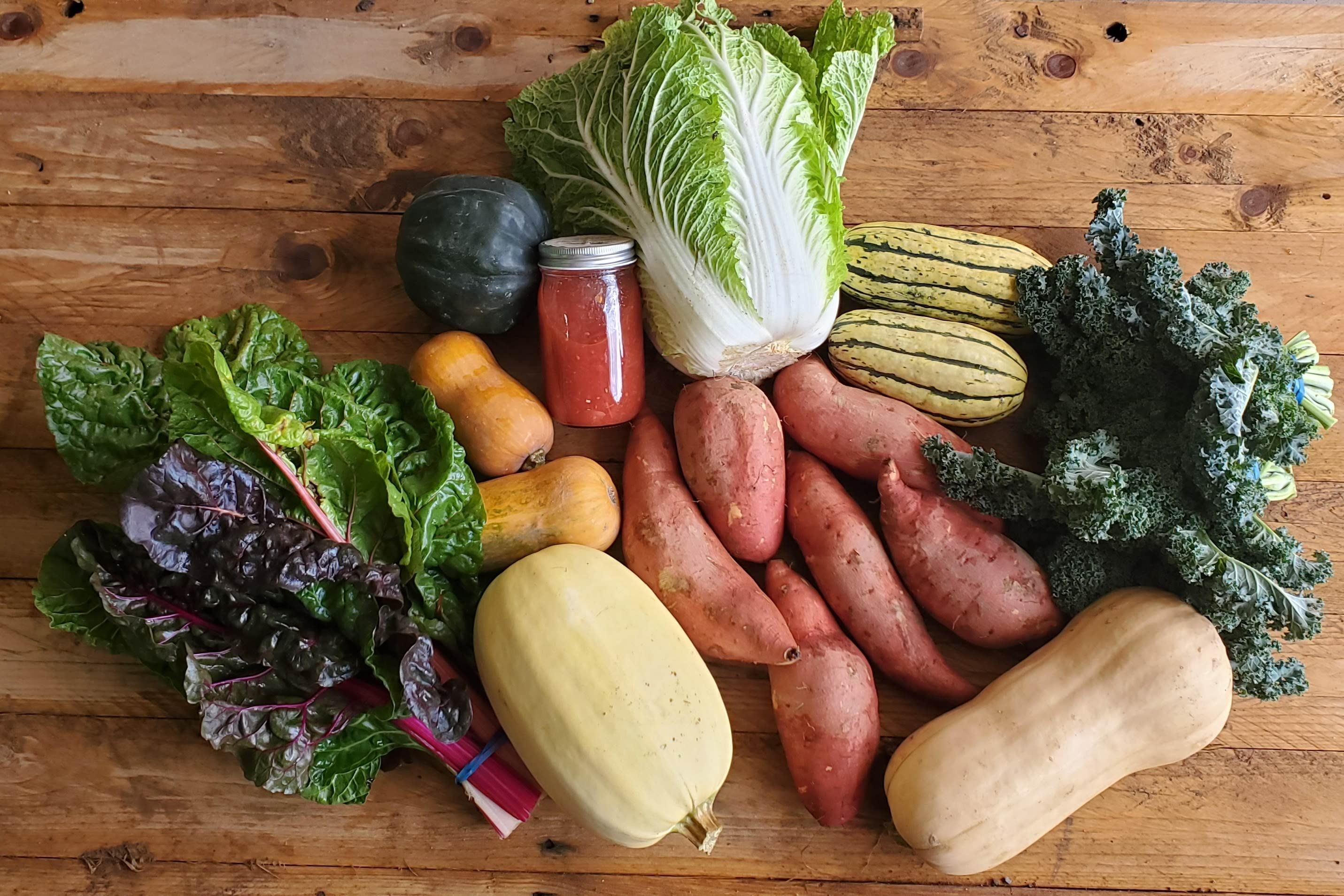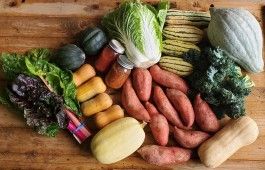It certainly looks like October now. The rains of last week were welcomed, and will help to refill the nearly completely depleted retention ponds and streams that we use for irrigation. The rain also gives us hope that some of the later season greens and maybe even the carrots will make it into shares for the end of the Summer CSA share, which will be the week of October 19. We are finalizing information for the Autumn CSA, which will be 3 sets of biweekly pick ups, on Tuesdays and Saturdays starting in early November and finishing in early December. We will send an email when sign up is available and we hope you will join us to fill your tables and pantries with local Organic winter squash, potatoes, and greens for the upcoming holiday seasons.
We hope you enjoyed the small but potent garlic this year. After being pulled from the ground in July it was dried in the barn before we trimmed it, and sorted out the "food-grade" cloves from the seed cloves. In order to produce the harvest for next year, we must save the biggest heads to be used as next years’ seed stock. Our garlic this year has been the hard-necked kind which is prized for its intense flavor and production of the scapes which you received earlier this season.

This year’s crop, like so many others in the extreme drought situation was not quite what we hoped, but we found a good source of seed garlic from a farmer in NY so that we will hopefully have a bigger and better crop for next year. We will plant the seed in an area that we can irrigate; something we have never had to do before, but 2020 has taught us we must plan for all possible disasters and we have invested heavily in an above ground watering system to complement our drip irrigation systems we have had in place for years.

The hard-necked seed-quality heads, which sell for up to $20/lb, need to be split into individual cloves and then planted, root-side down into well-fertilized soil at the beginning of October. They will then be covered by straw to retain their moisture and keep them from freezing and thawing too often or too soon during the dark season.

After the winter, another layer of straw will be applied to protect the tender green shoots which come up in early spring, while also suppressing competitive weeds. The reason you shouldn’t store garlic in your refrigerator is that when it comes out of that cold environment, the clove thinks it’s time to put up a green shoot, as spring has arrived. Since you want to avoid your plump clove turning into a green shoot, store your garlic in a dry dark place, at room temperature. Despite its production being very labor intensive, we think the end result is much more flavorful than what you usually find in the grocery store, the garlic heads which have most likely been grown in and shipped from afar overseas.




